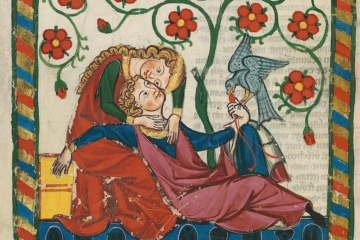by Harry Gulcher, Master of History in Rosewood
The Cumans are a curious people. I believe they are some of the oldest inhabitants of the world. Throughout their existence, they have mastered the art of horsemanship and the nomadic lifestyle. Only recently have they accepted Islam as their religion, but they seem relatively tolerant of other faiths as well. Their unique style of warfare enabled them to strike deep within Europe. I have some friends who claim that their eastern border goes all the way to the Empire of China, a mysterious land of dragons and myth. Stories tell of those who go there but never come back. They also claim they have armies of many tens of thousands. But if that were true, they would have conquered the entire world by now.
The Cumans are hard to defend against. They use skirmish tactics and shock in order to weaken their enemies before the killing blow. The best way to defeat them is to retreat into your cities and wait them out during the winter. However, this does not stop them from looting unprotected villages and destroying crops fields. There have even been reports of them using siege engines, built and manned by the slaves they capture through conquest.
In the year 1089, the Cumans prepared to aid their tribute state by expanding their borders into Hungary. The Cumans prepared their forces and their tributaries as well. The Pecheneg, Bashkiria, and Volga Bulgaria Khanates. Hungary was not alone in her efforts, however, with Croatia, Austria, and Bohemia coming to its side in order to defend Christendom from the invading horse lords. Additionally, Vladimir and Perm joined the fight, aided by Byzantium, which took an indirect role in the war.
Even with so many allies and so many men, the Hungarians were outnumbered 2:1.
Our accounts of the battle are poor at best, but I was able to piece together a few events and persons.
The Cuman side had three distinguished commanders:
- Khangan Turgur II
- Khan Temir
- Jaral “Horselord”
The Hungarian side boasted these commanders:
- Duke Alajos II
- Sir Karl of Austria
- Lord Andrej of Bohemia
There were two major battles and a siege in between. The results of these conflicts will shape the history of Europe for the coming generations.
The Battle of Arad, 2nd June 1089
The Hungarians’ 23.000 strong army faced off against the Cuman 40.000 strong force. It was a valiant defeat, but the Hungarians decided to continue defending lost ground. As a result, the Cumans were able to inflict even more casualties and significantly impact the Hungarians’ morale. They do the most sensible thing and retreat to their fortified cities and hope for the best. As expected, however, the Cuman riders burn every home, field, and village they can get their hands on. They take a ridiculous amount of prisoners as slaves.
The Siege of Lugos, 10th August 1089
One of the more important forts in the region was besieged and surrounded. The Cumans brought no siege engines, but they decided to wait out the defenders. Unfortunately for them, not even the winter broke them. Their resolve stood high. They were determined to breach the city because they knew if Lugos fell, so would the Romanian region. The siege lasted around 200 days and all accounts showcase it as brutal and unforgiving. All food stores were depleted, people resorted to eating pets and rats to survive.
The Battle of Frengrad, 25th June 1090
The last big battle of the war. Ironically it takes place in the Ruslands, not in Hungary. But this battle proved decisive for the Russian rulers, who now found themselves in the worst position imaginable, at the mercy of the strongest army in the world. Hungary’s fate was decided that day, but Perm lost its independence altogether. Vladimir had half of its lands taken.
The Hungarians could only last a while longer. With each raid, the people’s unrest grew. And so on the 30th July 1091, a peace was signed. The Pecheneg would receive the conquered Hungarian land and the County of Transylvania was to be released as well. All in all, these are dark times to live near the east, for many a foe prowl the border. May God watch over us. Amen


